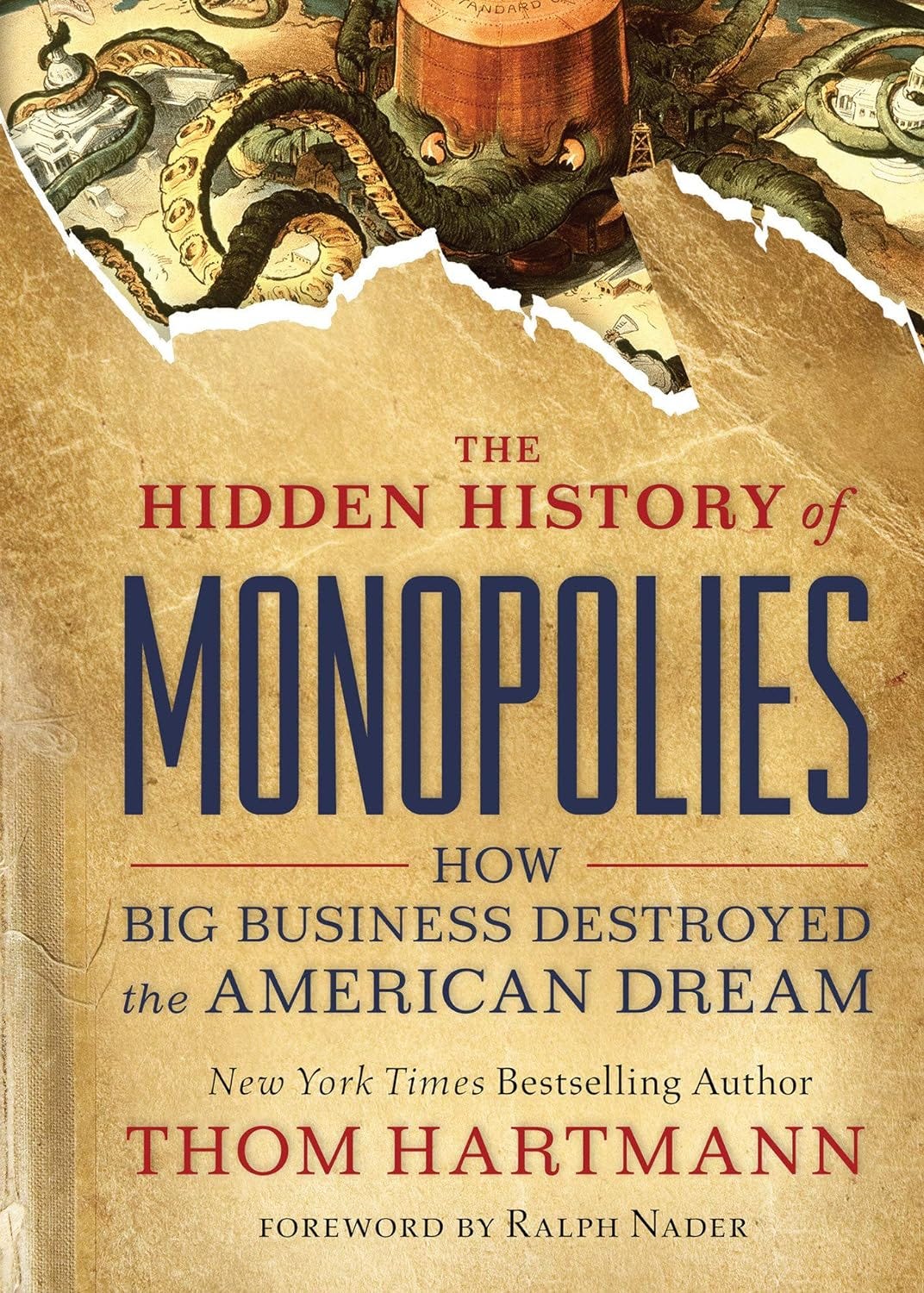Monopoly in Pharma: Big Private Profits from Publicly Granted Patents
The Hidden History of Monopolies: How Big Business Destroyed the American Dream

In 1923, the patent for insulin was sold for $1 to the University of Toronto. Less than 100 years later, a 26-year-old Minneapolis man named Alec Raeshawn Smith died of diabetic ketoacidosis. Alec died three days before payday, his insulin injector empty and his blood sugar at a lethal level.
How did this happen?
Until a few years after World War I, no one had figured out how to synthesize or extract insulin in a way that humans could use it, and type 1 diabetes was all but a death sentence.
Then, in the early 1920s, a team of researchers at the University of Toronto discovered a process to extract and purify insulin. The discovery saved millions of lives and earned a Nobel Prize for two of the researchers in 1923—Dr. Frederick Banting and John Macleod. The researchers patented insulin as US Patent No. 1469994 on October 9, 1923—and they quickly sold the patent to the University of Toronto for $1.
That’s not a typo. These researchers had the opportunity to become unbelievably wealthy with the patent on insulin— sure, a few million people may not have been able to afford insulin and might’ve died between 1921 and now—but the profits from insulin would’ve ensured that they’d never have to see the huddled, dying masses.
Instead, the researchers sold the patent to the university for $1 so that insulin could be made widely available and millions of lives could be saved.
So why is Alec Smith dead?
Just Three Companies
That’s how many companies produce and sell insulin: Sanofi of France, Novo Nordisk of Denmark, and Eli Lilly Company in the United States. It’s not a true monopoly, because there are three companies, all competing for the same customers.
Together, the three companies dominate 99% of the insulin market in the United States.6 According to a 2018 report from Prescient & Strategic Intelligence, the insulin market is expected to climb to $70.6 billion by 2023, up from an estimated $42.9 billion in 2017.7
According to the report, the factors driving growth in the human insulin market are “[i]ncreasing population exposure to key risk factors leading to diabetes, technological advancements in insulin delivery devices, growth in the number of diabetic patients, and [a] growing geriatric population.”8
In other words, three companies are going to continue to rake in massive profits because the global population is getting sicker and older, and insulin-delivery devices are getting more elaborate. But none of that has anything to do with the cost of insulin itself.
So why has the cost of insulin doubled and even tripled over the last 20 years? Carolyn Y. Johnson of the Washington Post reported in 2016, “A version of insulin that carried a list price of $17 a vial in 1997 is priced at $138 [in 2016]. Another that launched two decades ago with a sticker price of $21 a vial has been increased to $255.”9
The reality is simple: the producers of insulin care only about increasing profits.
Take Eli Lilly. As Universities Allied for Essential Medicines (UAEM) director Merith Basey explained, “This generic drug has been around for almost 100 years, yet the leading cause of death for a child with Type 1 diabetes in 2017 remains a lack of insulin.
“Globally,” she continued, “one in two people with diabetes lack access. Eli Lilly was a mom-and-pop company when it entered into an agreement with the University of Toronto in 1922. Now it’s part of a global monopoly.”10
And it behaves like it.
During Alex Azar’s five-year tenure as president of Eli Lilly, for instance, the price of one insulin product more than tripled. In 2012, when Azar joined Eli Lilly, the company sold an insulin product called Humalog for $74 per vial. By the time Donald Trump nominated Azar to be secretary of health and human services in 2017, Humalog cost $269 per vial.
As Alexander Zaitchik wrote in the American Prospect in 2017, “Humalog’s $74 sticker price when Azar became CEO was already outrageous compared with other developed countries. In Sweden, a vial of the same medicine is reimbursed at the (still profitable) price of $18.38.”11
The price increases had absolutely nothing to do with climbing manufacturing costs or expanding markets or climbing costs of research and development. The price increases happened only because three companies control 99% of the market in the United States, and higher prices mean higher profits for all of them. Three insulin producers have created a cartel situation, and the end effect is that patients in Amer- ica are treated like renters in Monopoly. The insulin producers have divvied up the board, and with every property in their pockets, they’ve raised prices in lockstep.
As Kasia Lipska wrote in the New York Times in 2016, “[T]he big three have simultaneously hiked their prices. From 2010 to 2015, the price of Lantus (made by Sanofi) went up by 168 percent; the price of Levemir (made by Novo Nordisk) rose by 169 percent; and the price of Humulin R U-500 (made by Eli Lilly) soared by 325 percent.”12
Alec Smith died because he couldn’t afford his insulin, and his insulin was made unaffordable by a monopolistic global insulin cartel.
Keep reading with a 7-day free trial
Subscribe to The Hartmann Report to keep reading this post and get 7 days of free access to the full post archives.

